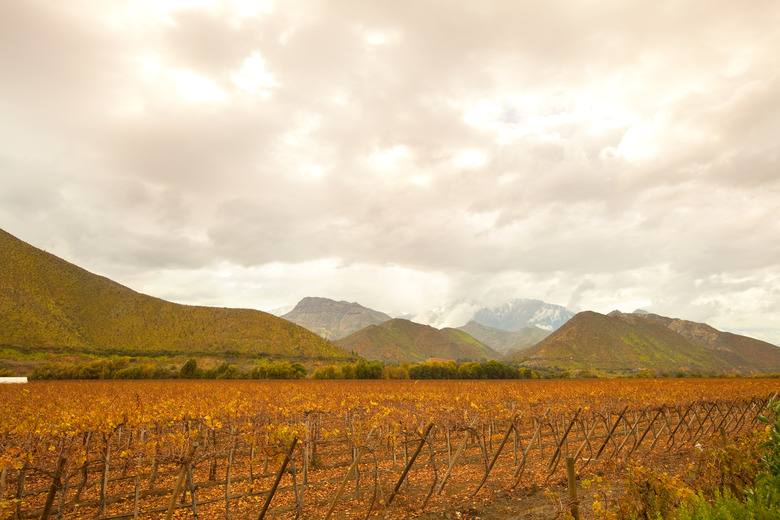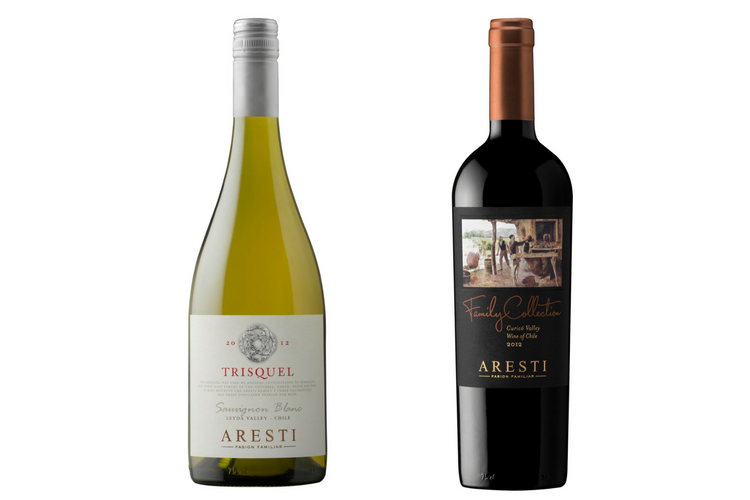Viña Aresti Sources The Best Grapes From All Over Chile
Chile is one of the most exciting wine-growing countries in the world and its diversity is one of the reasons. That diversity manifests itself in several ways. North to south, Chile is 3,000 miles long, with the Pacific coastline on its western side and the Andes to the east. The country contains arid deserts, lowlands, highlands, areas of ocean influence, and a myriad of soil types. As a result there are numerous distinct wine regions, each best suited for different combinations of grapes.
Some Chilean wineries produce only wines from grapes grown in in their home region; others look further afield so they can source the varieties they want in the spot where they grow best. Viña Aresti — which is closing in on 70 years as a family-owned and -operated winery, something rare in Chile — is one of the latter.
The winery is run by Begoña and Ana María Aresti López, the daughters of founder Vicente Aresti Astica. Female ownership is also a rarity among Chilean wineries, and something that sets Viña Aresti apart from the majority of its counterparts. It's also the only winery in Chile run by two sisters. Their Bellavista Estate is located in the Curicó Valley region. However, Viña Aresti sources fruit in a number of other regions as well, going to the Leyda Valley for sauvignon blanc, Colchagua for some of their cabernet sauvignon, and Maipo for syrah — among other places. As a result, the multi-tiered portfolio that Viña Aresti produces is a microcosm of the wine bounty that Chile at large offers.
I recently tasted through a selection of the winery's current releases. There are a number of commonalities between them that provide a snapshot into Viña Aresti's winemaking philosophy. These are wines of balance and proportion that are best enjoyed with food. Each offering speaks truthfully to the grape variety or varieties in question. Last but certainly not least, these wines have an overarching elegance that in most cases belies their price.
Trisquel Sauvignon Blanc 2016 ($22)
Leyda Valley is the source of the fruit for this wine. It's 85 percent sauvignon blanc, with a blend of other white varieties comprising the remaining 15 percent. Grapefruit, green herbs, and a touch of white pepper are the notable aromatics here. The palate is marked by incredible freshness. Citrus, yellow melon, and a tiny hint of vanilla are evident on the palate. The finish is crisp, refreshing, and persistent. Sauvignon blanc is one of the most exciting varieties grown in Chile, in part due to the many valid expressions that can be achieved; this is certainly one of them.
Special Release Reserva 2015 Cabernet Sauvignon ($15)
This is 100 percent cabernet sauvignon sourced in the Curicó Valley. Chile has been a source for outstanding cabernet for decades, and this offering is an entry-level steal. Ripe red fruit and hints of savory green herbs light up the nose. The full-flavored palate shows off red raspberry, plum, currant, and a dusting of cocoa. Chicory, a mélange of peppercorns, and earth are all present on the above-average finish. This is a textbook example of cabernet that provides far more value and drinking pleasure than its price would indicate
Trisquel Assemblage 2015 ($22)
The Colchagua Valley is a place where hearty reds thrive, and that's where Viña Aresti sourced the fruit for this blend. It's composed of cabernet sauvignon (44 percent), syrah (42 percent), and petit verdot (14 percent). What strikes me first here is the petit verdot; a little goes a long way. In addition to dark fruit aromas, it provides structure and a notion of velvetiness that pervades the entire wine. Violets, blackberry, and black raspberry are all in evidence on the nose. The flavors on the palate are lush and full with black fruits, hints of espresso, and black pepper all present. Chicory and Baker's chocolate emerge on the long finish. This versatile wine will pair equally well with roasted meats and dishes covered in red sauce.
Family Collection Assemblage 2012 ($35)
This blend from the winery's Family Collection tier brings together cabernet sauvignon (50 percent), merlot (20 percent), syrah (12 percent), petite sirah (10 percent), and petit verdot (8 percent) from Curicó Valley. The fruit was hand-picked and destemmed. Each variety was fermented and aged separately in French oak for 18 months, after which the blend was put together. Exuberant aromatics punctuated by dark fruits, spices, and hints of violets lead things off. The palate is substantial and layered with oodles of dark fruit flavors. Spices notes are evident alongside blackberry, black cherry, and hints of chocolate sauce. The substantial finish shows off continued dark fruits, dusty dark chocolate, and pepper notes. A great match for a marbled steak, roast pork, or other hearty meat dishes.
380 Codigo de Familia 2011 ($100)
This is a blend of cabernet sauvignon, malbec, and cabernet franc from the Curicó Valley. All of the fruit comes from just two estates. This wine was created to celebrate Viña Aresti's 65th anniversary. To create a wine that honors the land and the legacy their father started, Begoña and Ana María Aresti López helped with the winemaking process from grape selection all the way through the final blend. The malbec and cabernet franc were added after malolactic fermentation. Aging took place exclusively in French oak. Depth, precision, and elegance are the three words that first came to mind when I tasted this offering. The nose is gentle but inviting with rose petals, red fruit, and spice. The palate is studded with deep layers of ripe red fruit and accompanying spices. Soft, easy tannins and firm acid provide nice structure. The finish is long and memorable, with fruit, spice, and earth reverberating long after the last sip is swallowed. Learn more about Chilean wine here.

